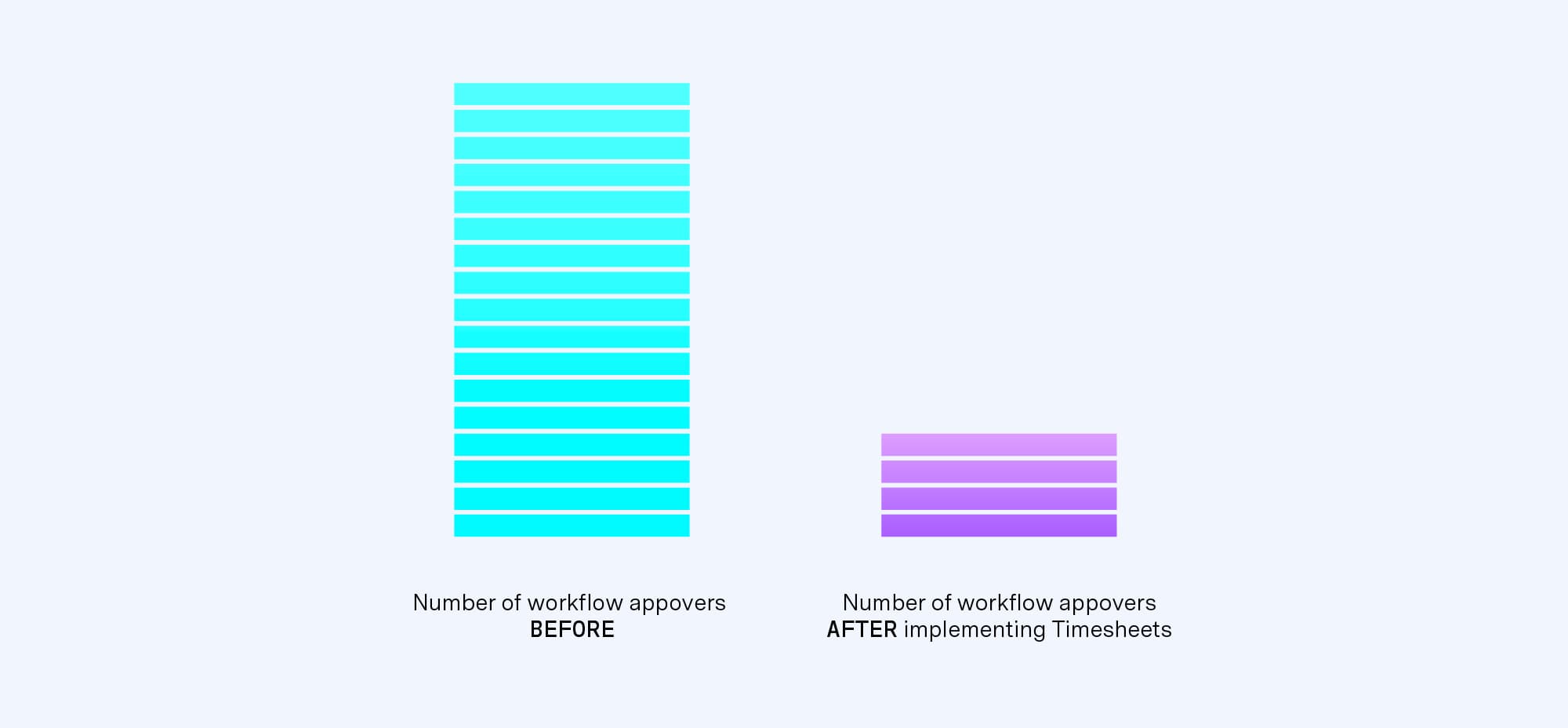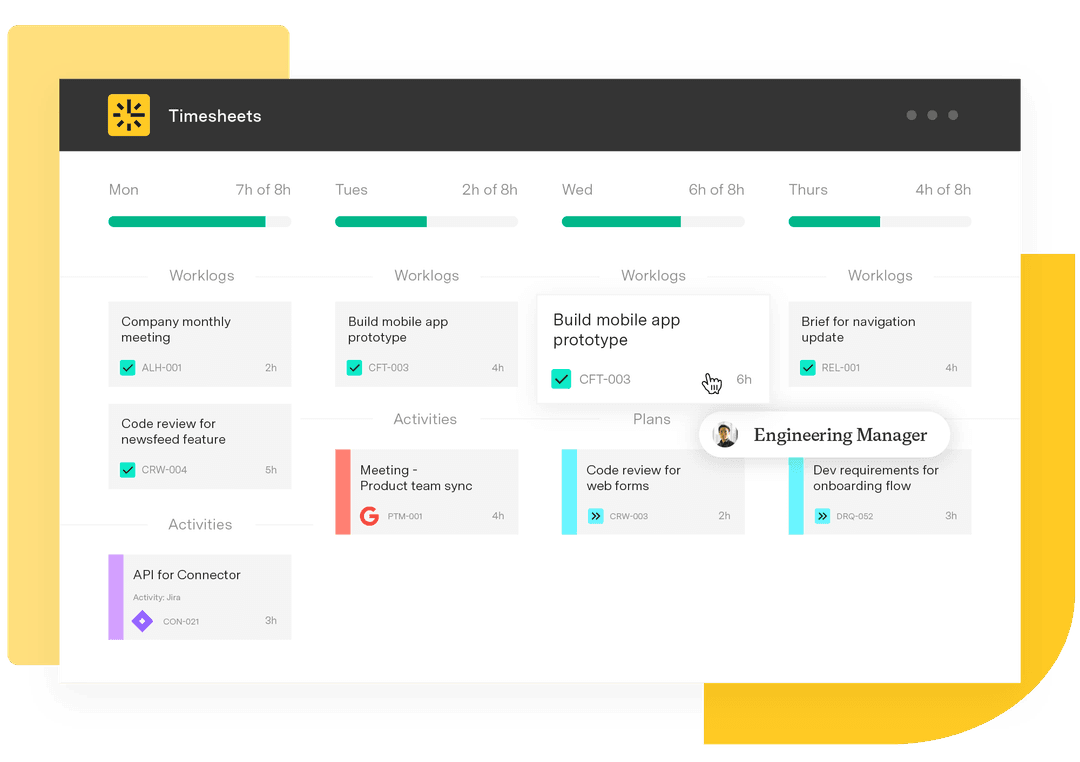TransUnion saves $750,000 annually with Timesheets
Tempo Team
Key Takeaways
94% reduction in time tracking costs from $1 million annually to just $62,000
Smoother expenditure processes going from 17 workflow approvers to just four levels
Reduced app-switching and saved managers and stakeholders time and energy
Global operations, 13,000+ employees, and seven distinct portfolios – there's no shortage of complexity for TransUnion to navigate in a heavily regulated industry.
As one of the “Big Three” credit reporting agencies in the U.S., and operating in more than 30 countries, TransUnion collects, analyzes, and delivers multidimensional data to assess credit risk, detect fraud, and enable financial inclusion for thousands of businesses and customers.
Keeping track of all the work their employees are doing and trying to develop ways to understand how long certain updates and projects take can be a major challenge. That is when they turned to Tempo Timesheets to help.
Time tracking pain points
Disconnected systems: TransUnion used Broadcom's Clarity for time tracking while all development work lived in Jira. Having this tool outside of their workflows was slowing everything down.
Audit compliance: When auditors requested evidence for capitalized work, the disconnect between systems created a manual nightmare. It was taking far too much time to show evidence of what they worked on, who worked on it, how much was spent, and what the plan was.
Skyrocketing costs: Broadcom had increased prices by 30-35% without offering the level of product innovation TransUnion was looking for, bringing the annual cost to approximately $1 million.
Slow approval process: Teams wanted to move quickly and log capital hours, but the formal approval process took up to a quarter to complete – slowing projects and creating audit risk.
Solution
As Vice President of Enterprise Transformation, Agile and Program Management Office, John Rager oversees the company's agile governance practices, tooling, and program management. He directly manages three-fourths of TransUnion's program efforts and leads approximately 460 teams organized into 57 Agile Release Trains (ARTs) globally.
One area he pays close attention to is how TransUnion tracks time spent on internally developed software for tax purposes.
"Our financial approach is to track internally developed software assets and depreciate them, capitalize them," Rager explained. "Our method is to track hours of labor spent developing these internal systems that are for the good of our customer base."
However, it was no easy task to track the time and effort spent on those projects. Teams wanted something that could integrate with their existing workflows in Jira.
After reviewing the market, Rager and TransUnion selected Timesheets – Jira’s most popular time tracking software.
"Program managers and RTEs have told me that it is much more intuitive and user-friendly than the previous system.” John Rager, Vice President of Enterprise Transformation, Agile and Program Management Office
Immediately, Rager's teams noticed the advantages – eliminating the need to switch between apps and providing teams with multiple ways to log time, including directly in Jira while they work on issues.
"Some teams use automation to take the user stories that are assigned to people and pre-populate them in their timecards, so they can just verify the hours that are recommended and submit them," Rager said.
Implementation
Rolling out Timesheets to approximately 5,500 timesheet users, plus 500 administrators and project leads across global time zones, required strategic planning and execution.
"I have a team of release train engineers and scrum masters that I'm responsible for. We made them coaches and trainers and had them take that knowledge to their teams," Rager explained.
"Without this army of scrum masters and RTEs that we trained – so they could train their own teams and become their own experts – I don't know how we would have pulled it off."
As a SaaS solution, the deployment was straightforward.
"It's not like the traditional ways where you're going through dev and test and staging and UAT and all these different environments," Rager said. "You just turn it on, you get what you get."
Not every challenge was technical, it turned out.
"One of the biggest challenges we had was change management and extracting the requirements from our accounting and finance teams," Rager explained. "The system they were living in just worked – in a somewhat dysfunctional way – and they were comfortable with the way it worked."
It took time, but they got the results they set out to establish: Better audit compliance, centralized tracking where work happens, and easier time entry for associates.
Results
Cost reduction
TransUnion reduced time tracking system costs from $1 million annually to just $62,000 – a 94% reduction. Even after adding $150,000 in AWS cloud storage costs for enhanced data analytics capabilities, total costs dropped by $750,000.
Streamlined approvals
The move to Tempo catalyzed an overhaul of TransUnion's approval workflow.

"Our previous authority for expenditure (AFE) process had 17 workflow approvers. It took a couple of months to a quarter to get permission," Rager said. "They streamlined that down to just four levels of approval because you can't wait a quarter to start work."
Rager is now rewriting the entire AFE process within Jira to streamline it even further.
"This is sort of a consequential benefit: we fixed another system and another process because of this move."
Strengthened audit compliance
Timesheets fundamentally changed TransUnion's audit readiness. By connecting time entries directly to work in Jira, TransUnion can provide auditors complete traceability from capitalized hours to specific requirements, user stories, testing activities, and production releases.
The accounting team has gained unprecedented visibility.
"They're coming to us with questions about user stories and the definition of story points and whether it was really dev, test, or requirements. They never had this before," Rager said.
Improved manager visibility and user experience
Managers who previously operated outside Jira now engage with their teams' work where it gets done. No more different logins, different tools, or interfaces. Thanks to Timesheets, the team can add hours to the work they are already logging in Jira.
Enhanced data analytics foundation
TransUnion is now combining Jira and Tempo data with Workday HR in an organizational cloud database.
"We have a much more robust dataset where I can pull what we call developer productivity metrics, capacity charts," Rager explained. "We're just at the beginning stages of this, trying to tap into the value of the data that's out there."
Looking forward
While tracking time more effectively and connecting systems may seem like a small step, it has unlocked major improvements both in the short-term and in the future for Rager.
"For the first time ever, because everything's in this central system, I've got 95% of the company managing all their work in Jira." John Rager, Vice President of Enterprise Transformation, Agile and Program Management Office
Thanks to Timesheets, this unified view has revealed areas of improvement in their project planning.
"Leadership sets five strategic goals for their organization. Is it a problem if 50% of our capacity is focused on one? I don't know. Is that your number one priority? Is that what you expected?" Rager asked. “Before, they were sort of flying blind. Now they've got some connectivity to it.”
"I want to make use of the data so the leaders can make business decisions and so that they can be aware for the first time ever," he said, adding a more reliable layer of data to help them more accurately determine "which way they want to steer the ship or if people are working on the right things."
With a foundation of centralized, connected data now in place, TransUnion and Rager’s teams are positioned to continue evolving how they track, analyze, and optimize their development efforts – all while maintaining the regulatory compliance their industry demands.


